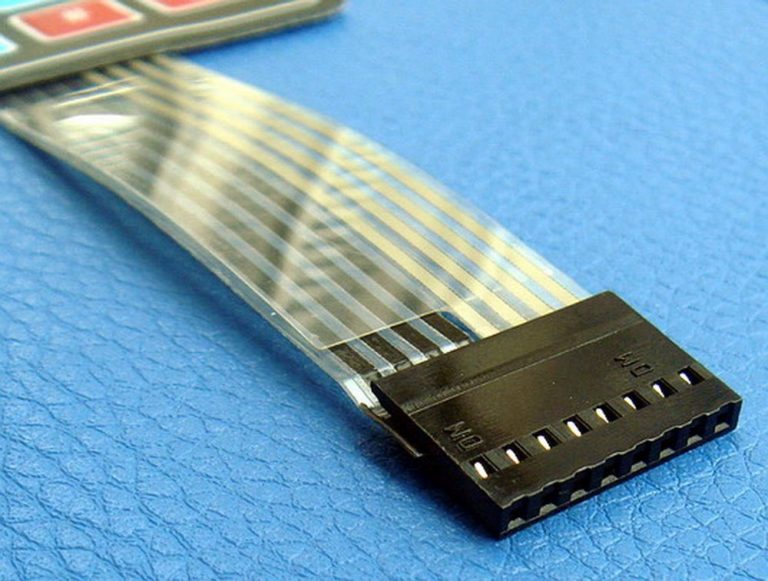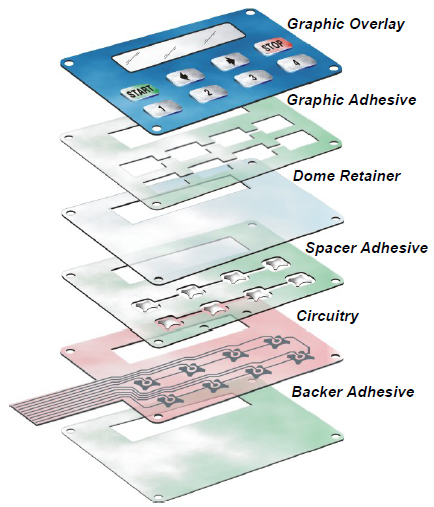Selecting the right membrane switch manufacturer can positively impact your product's performance.
Selecting the right membrane switch manufacturer can positively impact your product's performance.
Blog Article
Everything About Membrane Layer Change: Understanding Its Layout and Functionality
When you think about the control interfaces in modern gadgets, membrane layer switches usually come to mind. Allow's explore what sets membrane layer switches over apart from various other control systems.
What Are Membrane Buttons?

Their smooth nature makes them simple to tidy and resistant to dust and dampness, a vital function in many environments. Membrane layer buttons can also be personalized regarding form, size, and graphics, permitting suppliers to create special user interfaces tailored to specific items. Plus, they're light-weight and slim, which assists in minimizing the overall bulk of gadgets. In general, membrane buttons play a significant function in improving individual experience throughout a wide variety of applications.
How Membrane Layer Switches Work
When you press a key on a membrane switch, it turns on an uncomplicated yet reliable system. The top layer, typically constructed from versatile product, lowers onto a conductive layer underneath it. This action bridges the void in between conductive traces, completing an electric circuit. As quickly as the circuit closes, it sends out a signal to the gadget's controller, which interprets your input.
You'll discover that the responsive comments varies based on the switch style, offering either a soft click or a much more pronounced action. When you launch the key, the membrane layer returns to its initial placement, resuming the circuit and stopping the signal. This procedure takes place nearly instantaneously, making sure a receptive individual experience.
Membrane layer buttons are preferred as a result of their durability and resistance to dirt and wetness, making them optimal for different applications, from home appliances to clinical tools. Comprehending this operation helps you value their extensive usage.
Trick Elements of Membrane Layer Switches
Recognizing the crucial components of membrane buttons is fundamental for grasping their capability and design. The protective layer shields against ecological variables and wear, expanding the switch's lifespan. By recognizing these components, you'll obtain insight into just how membrane layer switches run and their significance in different applications.
Products Used in Membrane Switch Design
The performance and resilience of membrane layer changes heavily depend upon the products made use of in their layout. You generally come across polyester and polycarbonate as main substratums as a result of their exceptional stamina and versatility. These materials stand up to scratches and chemicals, making them optimal for requiring environments.
The conductive layers usually utilize silver or carbon, selected for their dependability and conductivity. membrane switch manufacturer. Silver offers exceptional performance, while carbon is an economical choice. For the overlay, you could take into consideration a matte or glossy surface, relying on your visual demands and individual experience
Adhesives play a necessary function as well; they bond layers safely and guarantee durability. Ensure to select adhesives that stand up to environmental elements like temperature level and humidity. Ultimately, don't neglect the significance of an excellent printing method for graphics, as it improves both performance and visual allure. Picking the appropriate products will certainly assure your membrane button stands the examination of time.
Design Factors To Consider for Membrane Buttons
While designing membrane layer switches, it's essential to take into account numerous aspects that affect their performance and customer experience. Start by focusing on the layout and switch dimension; make specific they're intuitive and easy to navigate.
Confirm your layout fits ecological variables, like dampness or temperature level variants, which could impact efficiency. By very carefully thinking about these aspects, you'll develop a membrane switch that enhances functionality and satisfaction.
Applications of Membrane Switches
Membrane buttons are versatile components found in various applications, from commercial devices to customer electronics. You'll see their effect in makers that need long lasting interfaces and in tools that take advantage of sleek styles. Comprehending these applications assists you value the functionality and practicality of membrane layer switches in day-to-day modern technology.
Industrial Equipment Use
When you're looking to enhance the functionality of commercial devices, membrane buttons supply a trusted solution that integrates resilience with straightforward style. These switches are best for rough settings, supplying resistance to dirt, wetness, and chemicals. You'll discover them in control panels for making makers, cooling and heating systems, and medical gadgets, where accuracy and responsiveness are vital. Their low profile indicates they fit effortlessly right into numerous devices, conserving useful space while preserving ease of use. With customizable graphics and backlighting alternatives, you can produce an user-friendly interface for operators, enhancing effectiveness and security. And also, their long life expectancy lowers upkeep costs, making them a wise investment for your industrial applications. Accept membrane layer buttons to streamline your operations and enhance overall performance.
Customer Electronics Combination
In the domain name of consumer electronics, membrane buttons play an essential role in improving individual interaction and tool performance. You'll find them in devices like microwaves, remotes, and gaming consoles, supplying a seamless means to interact with technology. Their smooth design enables easy assimilation right into numerous products, making controls instinctive and user-friendly. With their capability to include graphics and backlighting, you can appreciate a modern-day visual that enhances the tool's overall appearance. Membrane layer switches additionally guarantee toughness and resistance to dirt and dampness, prolonging the lifespan of your electronics. By picking membrane layer switches, you enhance not just the capability yet also the design of your tools, making day-to-day interactions smooth and enjoyable.
Advantages and Disadvantages of Membrane Buttons
While membrane layer switches provide an array of benefits, they also include some disadvantages that you must think about. One substantial benefit is their portable style, making them optimal for space-constrained applications. They're likewise economical, providing a sturdy remedy with a low manufacturing cost. Furthermore, their seamless surface is simple to clean, boosting health in environments like health look at this site centers.

Membrane buttons can have a shorter life-span contrasted to mechanical switches, particularly under hefty use. They can likewise be less tactile, which could influence customer responses throughout operation. Stabilizing these pros and cons will certainly assist you establish if membrane layer buttons are the ideal fit for your job.
Regularly Asked Questions
For How Long Do Membrane Layer Changes Normally Last?
Membrane changes generally last in between 5 to one decade, relying on usage and environmental problems. You'll want to examine aspects like wear, exposure to wetness, and temperature changes to determine their long life effectively.
Can Membrane Layer Switches Be Customized for Specific Styles?
Yes, you can customize membrane layer switches to fit details designs (membrane switch manufacturer). You'll have the freedom to pick colors, forms, and layouts that match your job's needs, ensuring they mix perfectly with your total visual
What Is the Cost Variety for Membrane Switch Production?
The price variety for membrane switch production commonly falls in between $1 and $10 each, relying on factors like design complexity, amount, and products. You can get quotes from suppliers to find the ideal option.

Are Membrane Switches Water-proof or Immune?
Membrane switches can be designed to be waterproof or immune, depending upon products used and building and construction techniques. If you need them for wet settings, assure you specify those demands throughout the style procedure.
Exactly How Do Membrane Switches Over Contrast to Conventional Buttons?
Membrane layer buttons are discover this normally thinner and a lot more versatile than conventional buttons, offering a sleek style. They're often much easier to clean websites up and integrate, yet could not offer the responsive responses you're used to with mechanical alternatives.
Verdict

Report this page